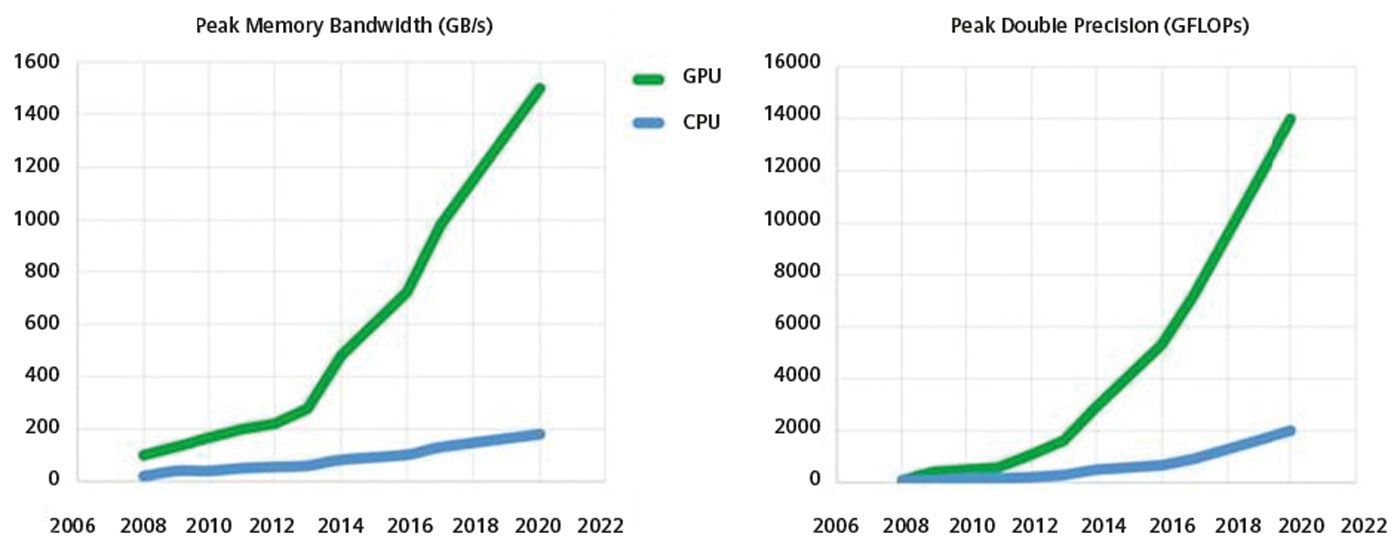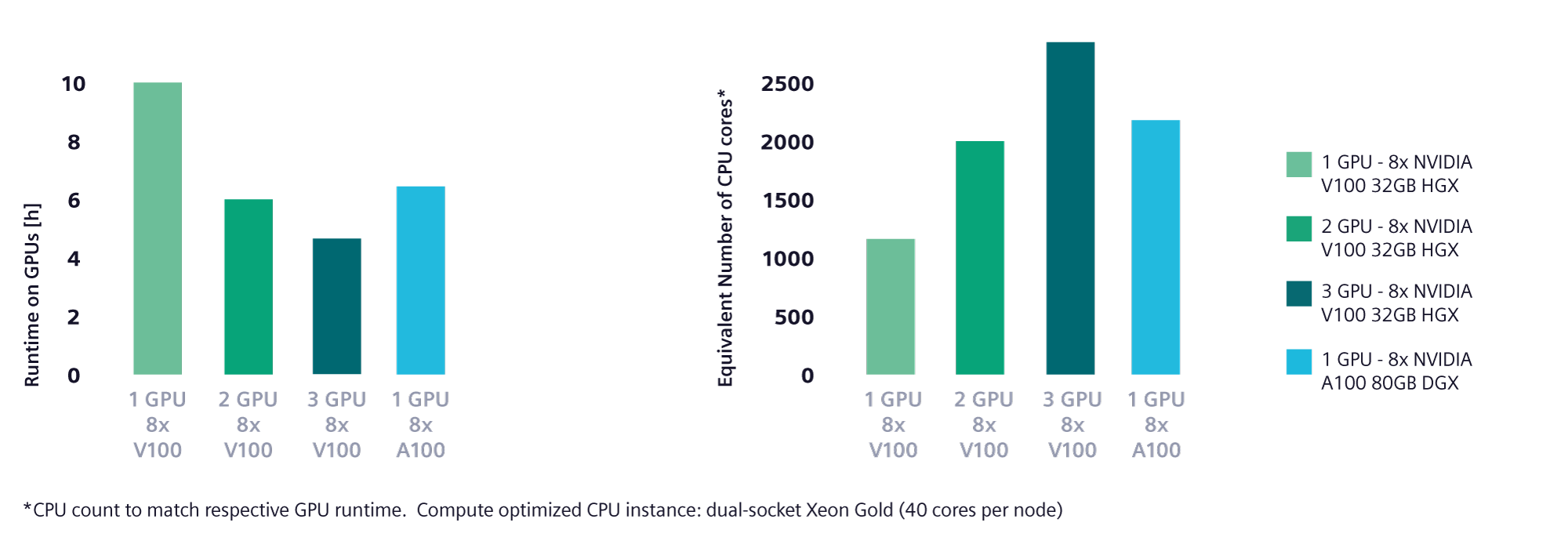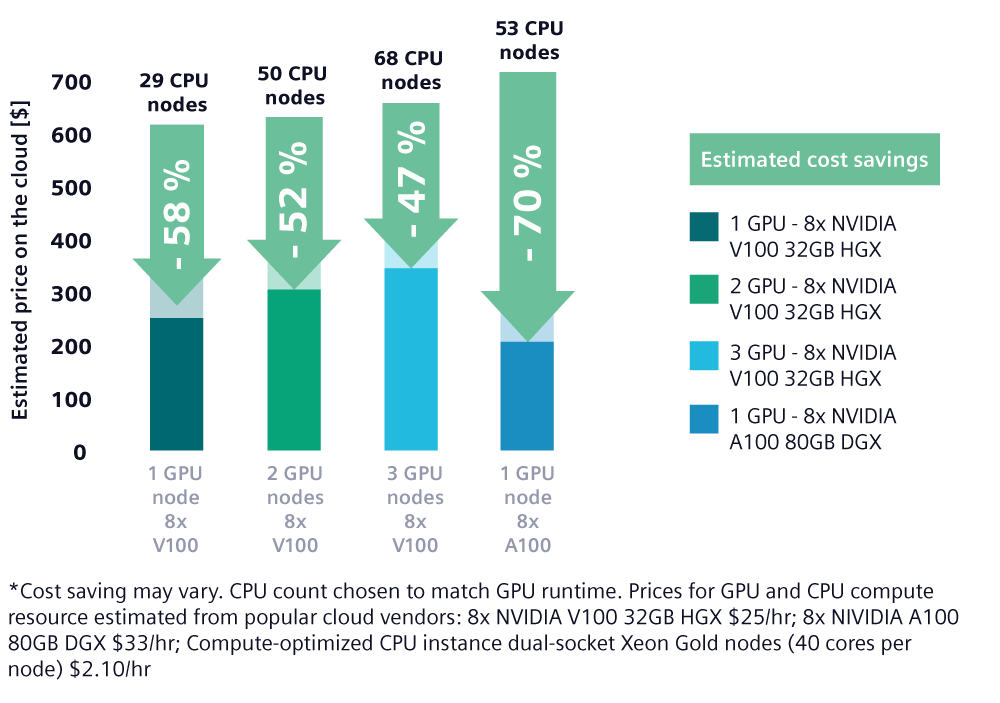GO FASTER
Beyond the power of the CPU
Removing the limits on simulation
By Luke Morris
Since its inception, CFD simulation has been limited by processing power. The more complex models you build, the greater CPU you’ll need to run simulations in a reasonable amount of time.
Thanks to CFD parallelization you can significantly speed up simulation time by investing in high end hardware, or a scalable cloud platform.
But this investment isn’t cheap.
In fact, it can be a barrier to smaller companies growing within the CFD space as they can’t compete with the sums that bigger, more established organisation can spend.
But what if simulation wasn’t all about the CPU?
What if it could use other existing elements of computer hardware to take some of the load off the CPU without slowing down simulation?
Any gamer will tell you that the most important component of their computer is the GPU (graphics processing unit). Every computer has one. Without it, you wouldn’t see any images on your monitor. But what if you could use the processing power of the GPU instead of the CPU for CFD simulation?
That’s what Siemens and NVIDIA set out to discover in a collaboration designed to deliver faster simulation turnaround times at lower hardware investment costs.
Entering the age of the GPU
GPU architecture has developed rapidly in recent years, particularly thanks to NVIDIA introducing high bandwidth memory cards that allow for better collaboration between the CPU and GPU. At the same time, the evolution of CPUs appears to be slowing down in terms of peak memory bandwidth and peak double precision. And GPUs are known to deliver significant scalability and better performance at a lower price than CPUs.
Dr Vincent Natoli, Founder and CEO of Stone Ridge Tech notes that “When compared on a chip-to-chip basis against CPUs, GPUs have significantly better capability on both speed of calculation (FLOPS) and speed of data movement (bandwidth) (GB/s).”
The introduction of more flexible programming languages also allows larger parts of code to be ported to GPUs faster. So, with all this potential power available at a reduced cost it’s the perfect moment to utilise GPUs within CFD simulation to open it up to more users.

GPU-powered simulation
Working with NVIDIA, Siemens has developed Simcenter STAR-CCM+ 2022.1 to bring CUDA-enabled GPU acceleration to the simulation party. But what exactly has this achieved?
To prove the capabilities of the latest release of the software, Siemens and NVIDIA engineers ran a set of industrial-grade external vehicle aerodynamics simulations on both CPUs and GPUs and compared the results.
Benchmarking proved that by using GPUs the hardware cost could be reduced to 40% and the power consumption to 10% of the CPU equivalent. And that would maintain an identical time to solution.
The tests also found that scaling across GPU nodes gives further benefits. In fact, one single NVIDIA 8xA100 80GB DGX achieves an equivalent runtime to 2120 CPU cores. So, if you want to, you can run simulations much quicker on GPUs instead of CPUs and still save on cost and power.
“Siemens Simcenter STAR-CCM+ is giving an incredible boost to CFD simulations by using NVIDIA GPU technology via the CUDA platform and accelerated libraries. Simcenter STAR-CCM+ users can now run more simulations, faster, and can gain critical insights for their design and operation workflows without compromising on accuracy leveraging NVIDIA GPU architecture.”
Niveditha Krishnamoorthy Developer Relations Manager at NVIDIA
Save more in the Cloud
If you run your simulations on a cloud platform there are even more savings to be made. Based on average pricing from the most popular cloud vendors, switching to GPU computational power can save as much as 70%, as the graphic below shows.
“Siemens Simcenter STAR-CCM+ is giving an incredible boost to CFD simulations by using NVIDIA GPU technology via the CUDA platform and accelerated libraries. Simcenter STAR-CCM+ users can now run more simulations, faster, and can gain critical insights for their design and operation workflows without compromising on accuracy leveraging NVIDIA GPU architecture.”
Niveditha Krishnamoorthy, Developer Relations Manager at NVIDIA


Beyond aerodynamics
So, this is great news for aerodynamics CFD engineers, but what about the rest of the simulation community?
Fear not, this is just the first step for the Simcenter STAR-CCM+ development team.
Now that the concept of NVIDIA GPU-enabled acceleration has been proved for aerodynamics, it can be taken much further. The plan is to extend it across all relevant core solvers, meaning that simulation engineers across all industries and applications will be able to take advantage of faster calculations at significantly reduced costs.
Whether you run your simulations on local hardware or in the cloud, GPU power will soon be available. There’ll be no more waiting days for tests to complete or slimming down simulations to get them finished in a short amount of time. Just imagine what engineers will be able to achieve when they have almost unlimited processing power.
